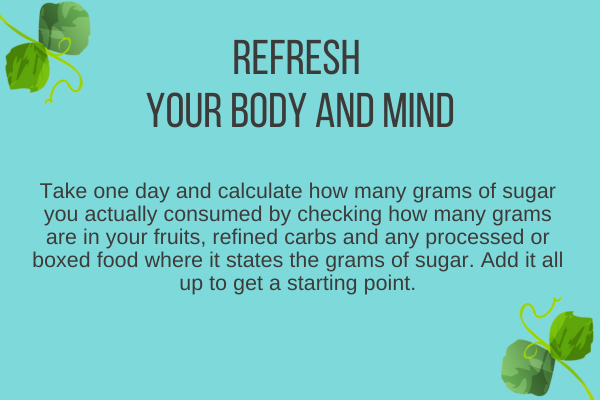For those of us with a sweet tooth, limiting our sugar intake can sometimes feel like an impossible feat. Aside from keeping to the American Heart Association’s recommendation of no more than 36 grams (9 teaspoons) for men and 24 grams (6 teaspoons) for women daily, there’s also having to figure out how much sugar is in the foods we love. It doesn’t help that there are so many terms on food labels — sugar-free, reduced sugar, no added sugar — and different types of sugar.
Here’s a look at the major terms you see on food labels, exactly what they mean, and how to tell the difference among them, so you can shop like a pro and keep your sugar intake where you want it.
What does “sugar-free” mean?
The Food and Drug Administration regulates how sugar is handled on nutrition facts labels. In order for a brand to use the term “sugar-free,” the FDA has set parameters that one serving must contain less than 0.5 gram of sugars. This regulation also applies for the following terms:
• free of sugar
• no sugar
• zero sugar
• without sugar
• sugarless
• trivial source of sugar
• negligible source of sugar
• dietarily insignificant source of sugar
Amazing how many crazy terms there are and yet it still can contain ‘some’ sugar!
One thing to keep in mind: Just because a product is sugar-free doesn’t necessarily mean it’s unsweetened. Brands typically turn to sweetener alternatives, often what are called sugar alcohols (including sorbitol, xylitol, erythritol, isomalt, or maltitol). Sugar alcohols can be a good alternative to sugar, especially for people with insulin resistance or diabetes, because they have fewer calories and minimal impact on blood sugar levels.
However, sugar alcohols can cause unpleasant gut symptoms like cramping, diarrhea, and bloating, so it’s best to introduce them cautiously and in small quantities, especially if you are prone to an upset stomach.
They will also use artificial sweeteners in products with the label ‘sugar-free’ or ‘zero sugar’. However, there is evidence that these products can increase appetite and weight, disrupt gut health, and put you at risk of metabolic disorders like Type 2 diabetes, just the things we are trying to avoid. I highly recommend not consuming any products that contain artificial sweeteners most commonly found under the names of Sucralose, Aspartame, Acesulfame potassium and saccharin.
What is considered ‘added sugar’?
Added sugars, not to be confused with natural sugar, is sugar that is added during processing, such as cane sugar, honey, maple syrup or concentrated fruit juice. Natural sugars, on the other hand, are naturally occurring in the ingredients, most commonly in fruits and dairy products.
To use the ‘no added sugar’ claim, the FDA requires the product be free of any added sugar or any ingredient that contains added sugar that was added during processing or packaging. The same regulations apply for the phrases ‘without added sugar’ and ‘no sugar added’.
Though the FDA places all forms of added sugar into the same category, there are differences. Unrefined sugars such as maple syrup or honey may carry some benefits, such as trace minerals — but, of course, they’re still forms of sugar.
Opting for less processed versions is a good idea if you’re going to have added sugar, but don’t be fooled into thinking they’re a health food. Moderation is key, and the most important factor is how much added sugar you’re consuming, not necessarily which type.
What does “reduced sugar” on a food label mean?
Reduced sugar and related terms set by the FDA refer to foods that contain at least 25% less sugar than the standard version of that product. On the packaging, the brand must accompany the claim with a statement that compares the sugar content with the regular version of the product (e.g., “this cookie sandwich contains 25% less total sugar than our regular cookie sandwich”). These parameters also apply to these terms:
• reduced in sugar
• sugar reduced
• less sugar
• lower sugar
• lower in sugar
If there’s an option to purchase a product with reduced sugar, odds are it’s a healthier alternative. That being said, it’s important to be mindful of the fact that ‘reduced sugar’ does not necessarily translate to ‘low in sugar’ or healthy.
A ‘reduced sugar’ snack is a better option than its full sugar counterpart, but it’s still important to pay attention to how much sugar is being consumed either way. For example, the ‘reduced sugar’ option may still have 15 grams of sugar compared to 20 grams in the original. So it’s important to be mindful of portion sizes, and adding fiber or protein to your sugary meal to support your health.
The bottom line is to seek out ‘no added sugar’ on the label, which means any sugar in the food is naturally occurring. In foods like fruit and dairy products, there’s usually fiber or protein to balance the naturally occurring sugar. Also check nutrition labels to see how much sugar is in each serving of anything you’re eating.
I also recommend that you look for options with fiber and protein to help manage blood sugar, and pay attention to how many grams of sugar you’re eating overall over the course of the day to stay within the recommended guidelines. Keep in mind that there’s often added sugar in foods that aren’t sweet, such as condiments and packaged bread.
I understand this is a lot to comprehend but just becoming more mindful of how much sugar you’re getting each day is the first step toward making better choices!

As always, please don’t hesitate to ask me if you have questions!

